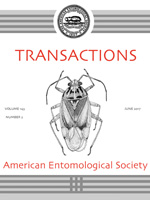Global interest in biofuels has resulted in the development of novel land-use practices for the production of cellulosic biomass. One novel land-use practice that has recently been developed is intercropping switchgrass (Panicum virgatum) between rows of planted loblolly pines (Pinus taeda). However, our understanding of how intercropping switchgrass influences loblolly pine flora and fauna is limited. Therefore, we evaluated the influence of switchgrass cultivation within loblolly pine stands on invertebrate communities. We detected 2,913 individuals (n = 1,172 and 1,741 in 2014 and 2015, respectively), encompassing 13 orders. To examine invertebrate community composition among treatments, we conducted metric multidimensional scaling (MDS) in R. Multivariate analysis determined that treatment had a significant (Pr(>r) = 0.01) influence on invertebrate communities. Furthermore, stable isotope analysis suggests that Orthopterans are not assimilating cultivated switchgrass (C4 species), but are instead assimilating C3 plant species, such as Rubus argutus (sawtooth blackberry). Results indicate that switchgrass intercropping may be a viable land-use practice for the co-production of cellulosic biomass and forest products and the maintenance of invertebrate communities associated with loblolly pine plantations.
How to translate text using browser tools
3 March 2017
Switchgrass Cultivation within Loblolly Pine Plantations Influences Invertebrate Community Composition and Resource Use
Craig Marshall,
Samuel K. Riffell,
Scott A. Rush,
JoVonn G. Hill,
Kristine O. Evans,
Darren A. Miller
ACCESS THE FULL ARTICLE
Intensive forestry
intercropping
invertebrates
Loblolly pine (Pinus taeda)
switchgrass (Panicum virgatum)





